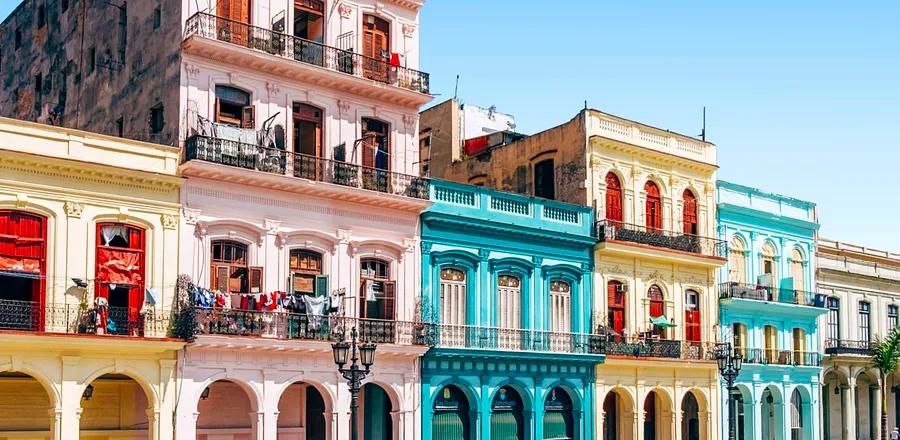The Chimei Museum in Taiwan, often referred to as the 'museum for the poor,' houses the world’s largest collection of violins.

'Do you play the piano? Take a look at this – a violin crafted by the inventor of the piano in 1705,' says Dai-Ting Chung, senior consultant for the museum's violin collection.
He gestures toward a display showcasing Bartolomeo Cristofori, the Italian master craftsman who invented the piano while under the patronage of the Medici family, all within a highly secured, climate-controlled vault.
Located in Tainan, Taiwan’s southern province, this private museum is renowned for housing the world’s most extensive and valuable collection of violins.
Among the 1,376 string instruments in the museum's collection, Cristofori's violin stands out as one of the most remarkable pieces.
'It took us six years to finally acquire this,' Chung shares.
As a violin maker himself, Chung is responsible for bringing most of the instruments into the museum’s collection.
'There are only three string instruments crafted by Cristofori still in existence – one at the Uffizi Museum in Florence, and two here at Chimei – a cello and a violin.'
A museum for everyone

Established in 1992 by Shi Wen-long, one of Taiwan’s wealthiest self-made entrepreneurs and the founder of Chi Mei Corporation, the Chimei Museum was originally located in a company building before moving to Tainan Metropolitan Park in 2014.
Now open to the public, the museum boasts stunning collections ranging from Western art to natural history, arms and armor, antiques, and, of course, an unmissable section dedicated to musical instruments.
Unlike many private collectors who acquire pieces based on personal preference, Shi began his collection to realize his vision of creating a museum that everyone could enjoy.
Born in 1928, Shi grew up in a large, impoverished family during wartime. His only escape from hardship was a small local museum in Tainan.
'It was like heaven for a child during wartime,' recalls Patricia Liao, Deputy Director of the Chimei Museum Foundation.
'He always dreamed of building a museum for everyone, especially for those less fortunate. This museum, therefore, wasn’t created to amass artworks that could simply be sold for a profit,' she says.
'His vision was clear: to bring Western art and culture here, for people who may never have the chance to travel and visit museums abroad,' Liao adds.
The world's largest and most comprehensive violin collection

The museum, which resembles a grand European palace, is nestled within a beautiful garden adorned with sculptures and replicas.
Currently, the museum showcases around 4,000 pieces – just one-third of its entire collection.
The way the collection is curated aligns with Shi’s vision of creating a museum accessible to everyone.
As you step into the Fine Arts Hall, you’ll find renowned depictions of Madonna and child displayed just inches apart from each other.
'While other museums might dedicate an entire wall to one important piece, our goal is to provide an overall perspective for those who may not yet have a clear understanding,' says Liao.
'Shi believes it would be a waste to keep these masterpieces in storage instead of sharing them with the public. Compared to other museums, this exhibition is packed with more diverse works.'
Prominent displays include Spanish artist El Greco’s 'Saint Martin and the Beggar,' French sculptor Antoine-Louis Barye’s 'Theseus Fighting the Centaur Bianor,' along with more than 1,600 pieces of arms and armor.

Yet, the museum's most dazzling attraction remains its exceptional collection of musical instruments.
Shi is not only a collector but also a passionate violinist. During the war, he started a business salvaging scrap metal from abandoned battleships and fighter jets to create violin strings.
The Chimei Museum proudly houses the world’s oldest playable cello, dating back to 1566, crafted by the legendary luthier Andrea Amati.
The museum also holds priceless instruments from the Stradivari and Guarneri families—two of the most prestigious violin-making dynasties in history. Among them is Giuseppe Guarneri del Gesù's 'Ole Bull,' one of the most expensive and renowned violins in the world.
'These two violins are by Gasparo Da Salo – the ones you usually read about in books. They’re incredibly rare, with only six remaining in the world,' explains Chung.
'Our goal isn’t to amass the most valuable or famous violins, but rather to acquire those that contribute to the complete history of string instruments,' says Chung.
Beyond string instruments, the museum also offers a family-friendly mechanical instrument performance and a fully immersive, walk-in orchestra experience.
Guardian of history

Thanks to its remarkable collection, Chimei has become a popular hub for violin conferences, hosting groups like the American Federation of Violin and Bow Makers (AFVBM) and the International Association of Violin and Bow Makers (EILA).
'The grandson of Carl Becker visited to see his grandfather’s work,' recalls Chung, reflecting on some of the famous violin makers he’s had the pleasure of hosting. 'Morassi’s son and grandson came here too. His grandson, now 18, has just started making violins.'
'It’s the only place where violin makers can gather and closely examine over 100 different violins at once,' says Chung.
'Chimei is like a hyper-busy violin information hub. Our database is widely regarded as the most thorough in the world – even surpassing those of Sotheby’s and Christie’s,' he adds.
'We assist anyone who needs information, from book publishers to researchers looking to identify specific labels inside particular violins.'
The Chimei Arts Award was also established to nurture and support local talent.
Around 200 violins have been lent to students and musicians who might not have the means to purchase their own, or who need one for a special performance.
'The program creates a win-win-win situation: it allows talented individuals to play on quality instruments, provides financial relief to their families, and ensures that great violins are heard,' says Liao.
'If these violins aren’t played, they’re just blocks of wood,' she adds.
The most notable borrower? Yo-Yo Ma, who needed a loaner when his cello broke just before a concert in Taiwan.
Young Taiwanese violinist Tseng Yu-chien also played a Chimei violin when he became the first Taiwanese to win the prestigious International Tchaikovsky Competition.
'This place is like a violin dreamland – where all your violin fantasies become reality,' says Chung.
'Since I took on this role, the overwhelming feeling is that I’m just one small part of the vast current of history. It’s a lot of pressure – these violins are centuries old, and I'm merely a temporary keeper in their story,' he reflects.
Chimei Museum, 66, Section 2, Wenhua Road, Rende District, Tainan City, Taiwan; open Thursday to Tuesday, from 9:30 a.m. to 5:30 p.m.

1

2

3

4

5
Evaluation :
5/5